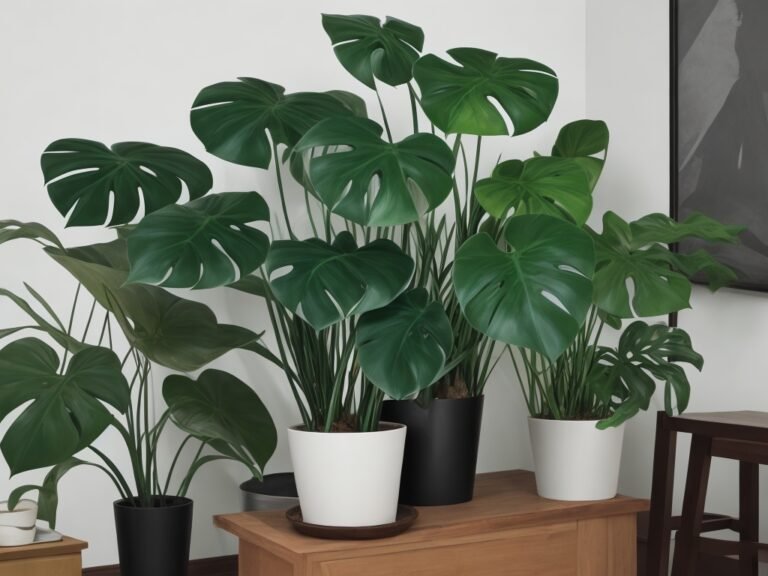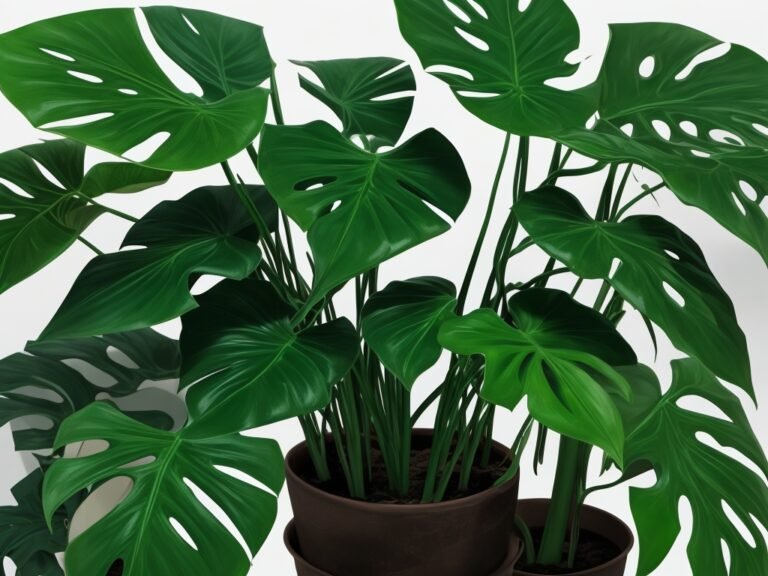Signs It’s Time To Repot Your Monstera Plant – A Guide for Plant Lovers
Key Takeaways:
- Yellowing leaves may indicate a need for repotting.
- If you notice root bound or circling roots, it’s time to repot your Monstera plant.
- Stunted growth and lack of new foliage can be signs that repotting is necessary.
- Repot your Monstera every 1-2 years to ensure optimal growth and health.
Are you tired of your Monstera plant not thriving as it should?
Well, I’ve got some good news for you! It might just be time to repot your beloved plant.
Repotting can work wonders for your Monstera’s growth and overall health.
But how do you know when it’s the right time?
In this article, we’ll dive into the telltale signs that indicate your Monstera is ready for a new home.
From overgrown root systems to dried out soil, we’ll cover it all.
So grab your gardening gloves and get ready to give your Monstera the upgrade it deserves!
| Signs it’s time to repot your Monstera plant |
| Signs |
| Roots are coming out of the drainage holes |
| Plant is top-heavy and falling over |
| Growth has significantly slowed down |
| Soil dries out quickly after watering |
| Visible roots on the surface of the soil |
| Yellowing leaves or stunted growth |
| Overflowing water from the pot during watering |
| Benefits of repotting |
| Proper root growth and development |
| Improved nutrient uptake |
| Fresher soil with better drainage |
| Larger pot size for better plant growth |
| Prevention of root-bound conditions |
| Steps to repot |
| Choose a slightly larger pot |
| Prepare a well-draining soil mix |
| Remove the plant from the current pot |
| Examine and trim any damaged or circling roots |
| Place the plant in the new pot and fill with soil |
| Water the newly repotted plant thoroughly |
Why Monstera Plants are Popular Houseplants
Monstera plants are popular houseplants due to their unique and attractive foliage.
They offer numerous benefits including improving air quality and adding a touch of green to your space.
Overview of Monstera plants and their characteristics
Monstera plants, also known as Swiss cheese plants, are popular houseplants loved for their unique and tropical appearance. These plants feature large, glossy leaves with distinct splits and holes, resembling Swiss cheese.
Monstera plants are native to the rainforests of Central and South America, where they thrive in the warm and humid conditions.
They are relatively easy to care for and can grow both indoors and outdoors, although they are commonly kept as indoor plants. Monstera plants are known for their air-purifying properties and can help improve the air quality in your home.
Benefits of having a Monstera plant in your home
Having a Monstera plant in your home is a great idea for several reasons.
Firstly, Monstera plants are known for their striking and unique foliage, which can add a touch of elegance and beauty to any space.
Secondly, these plants are excellent air purifiers and can help improve indoor air quality by removing toxins and pollutants.
Thirdly, Monstera plants are relatively low maintenance and can thrive in a variety of lighting conditions.
Additionally, these plants are known for their resilience and ability to adapt, making them perfect for beginner gardeners.
Overall, having a Monstera plant in your home can bring aesthetic value, improve air quality, and require minimal effort to keep them thriving.
Understanding the Importance of Repotting
Repotting is a necessary task for Monstera plants to ensure their health and growth.
What is repotting and why is it necessary?
Repotting is the process of transferring a plant to a new pot with fresh soil. It is necessary to provide your Monstera plant with adequate space for growth and proper nutrient uptake.
Repotting also helps prevent root bound, improve drainage, and maintain overall plant health.

How often do Monstera plants need to be repotted?
Monstera plants typically need to be repotted every 1-2 years.
This allows them to have enough space for their root system to grow and prevents them from becoming root-bound.
However, if your Monstera is showing signs of being root-bound, such as roots emerging from drainage holes or stunted growth, it may need to be repotted sooner.
Pay attention to the plant’s needs and adjust your repotting schedule accordingly.
Signs that indicate it’s time to repot your Monstera plant
If you notice any of these signs, it’s time to repot your Monstera plant:
- Overgrown root system.
- Roots emerging from drainage holes.
- Stunted growth or yellowing leaves.
- Soil drying out too quickly.
- Pot becoming too heavy or tipping over.
Signs it’s Time to Repot Your Monstera Plant
Is your Monstera plant showing signs of an overgrown root system, roots emerging from drainage holes, stunted growth or yellowing leaves, soil drying out too quickly, or the pot becoming too heavy or tipping over?
It might be time to repot your plant!
Overgrown root system
An overgrown root system is one of the signs that it’s time to repot your Monstera plant. When the roots start to outgrow their current pot, it can lead to stunted growth or yellowing leaves.
You may also notice roots emerging from the drainage holes, indicating that the plant needs more space to thrive.
Repotting will give the roots room to spread out and allow the plant to continue growing healthy and strong.
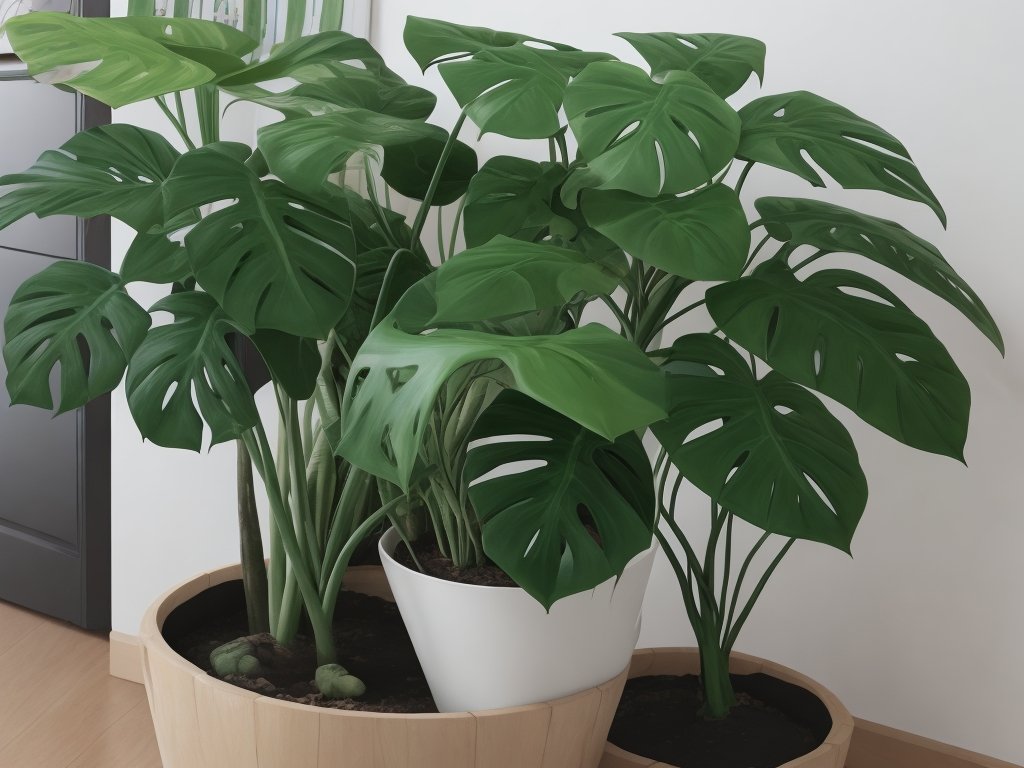
Roots emerging from drainage holes
Roots emerging from drainage holes indicate that your Monstera plant has outgrown its current pot and needs to be repotted. This is a clear sign that the root system is becoming crowded and needs more space to grow.
Repotting will give your plant the room it needs to continue thriving and prevent the roots from becoming root-bound.
Stunted growth or yellowing leaves
Stunted growth or yellowing leaves in your Monstera plant can indicate the need for repotting.
When the roots become overcrowded or the soil lacks nutrients, the plant may struggle to grow properly.
Repotting allows for fresh soil and more room for the roots to spread out, promoting healthier growth.
Yellowing leaves can also be a sign of nutrient deficiencies or overwatering, which can be addressed during the repotting process.
Regular repotting can help maintain the overall health and vitality of your Monstera plant.
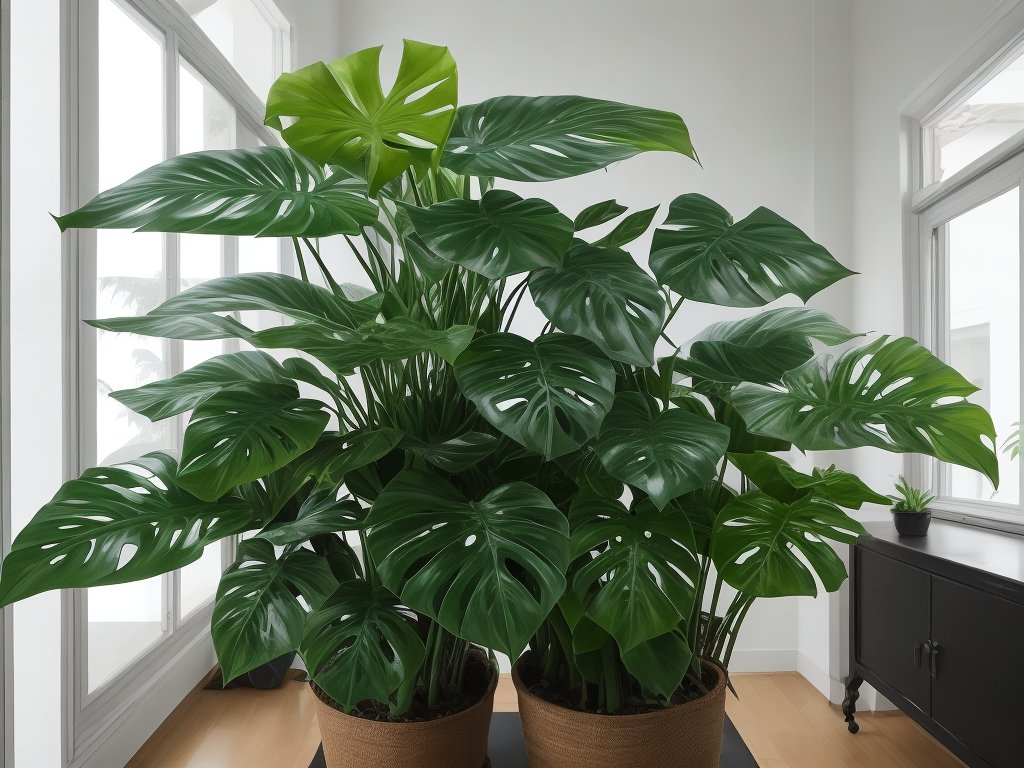
Soil drying out too quickly
Soil drying out too quickly is a common issue for Monstera plants. This can be caused by factors such as small or ineffective pots, porous soil mix, or environmental conditions.
To address this, consider repotting your plant into a larger pot with a well-draining soil mix.
Additionally, placing the plant in a location with higher humidity or using a pebble tray can help retain moisture in the soil.
Pot becoming too heavy or tipping over
If your Monstera plant’s pot has become too heavy or is tipping over, it’s a clear sign that it’s time to repot.
As the plant grows, the root system expands, making it top-heavy.
Repotting will provide a larger and more stable pot to accommodate the growing plant and prevent it from toppling over.
Make sure to choose a well-balanced pot and follow proper repotting techniques to ensure the plant’s health and stability.
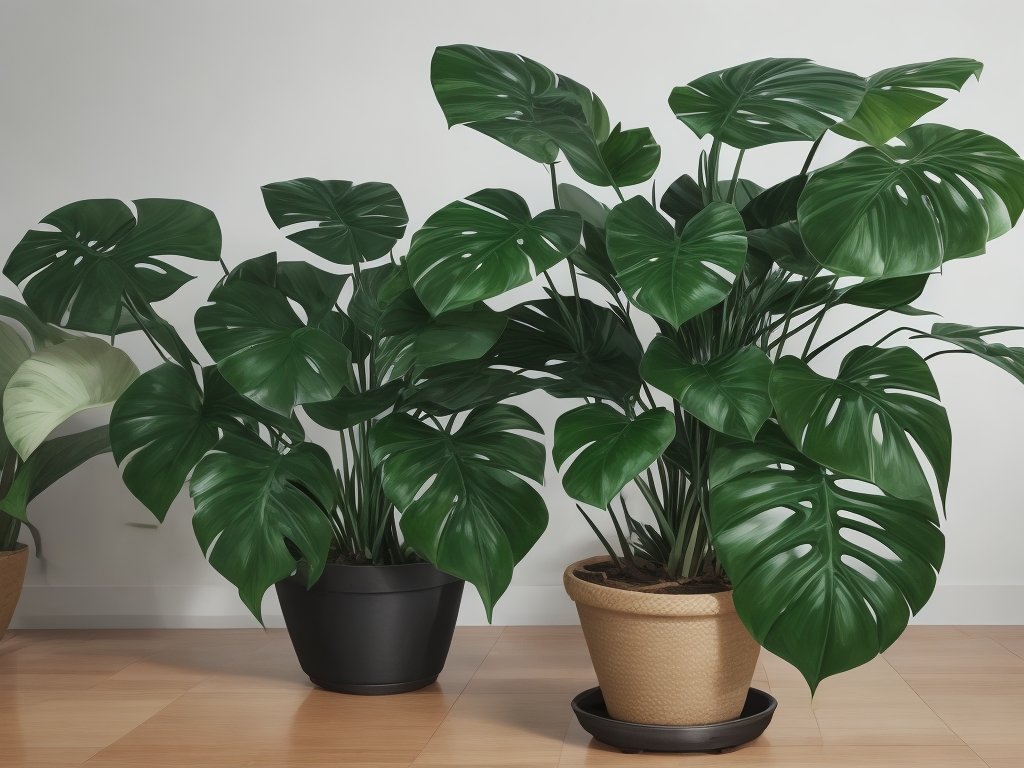
Preparing for the Repotting Process
Before repotting your Monstera plant, gather the necessary materials and tools, and then select the right pot and soil for the process.
Gathering the necessary materials and tools
To gather the necessary materials and tools for repotting your Monstera plant, you will need:
- A new pot: Choose a slightly larger pot with drainage holes to accommodate the growing root system.
- Fresh potting soil: Opt for a well-draining and nutrient-rich potting mix specifically designed for houseplants.
- Garden gloves: Protect your hands from any sharp edges or thorns during the repotting process.
- Pruning shears: Use them to trim any overgrown or unhealthy roots before repotting.
- Watering can or spray bottle: Ensure you have a way to water your newly repotted plant after the process is complete.
- Trowel or spoon: Use these tools to carefully remove the plant from its current pot and loosen the roots.
- Newspaper or a drop cloth: Lay this down to catch any soil or debris that may fall during repotting.
- Optional: Fertilizer: If desired, have a high-quality houseplant fertilizer on hand for providing nutrients after repotting.
Having these materials ready before you start the repotting process will make the task easier and more efficient.
Selecting the right pot and soil for repotting
Select a pot that is slightly larger than the current one, with drainage holes.
Use well-draining soil, such as a mix of peat moss, perlite, and potting mix.
Avoid heavy or dense soils that can cause waterlogging.
Steps to take before repotting your Monstera plant
Before repotting your Monstera plant, there are a few steps you should take to ensure a successful process.
- Water your plant a few days in advance to slightly moisten the soil, making it easier to remove from the pot.
- Choose a larger pot that provides ample room for your Monstera’s roots to grow. Ensure the new pot has drainage holes to prevent waterlogging.
- Prepare a well-draining potting mix that consists of a blend of peat moss, perlite, and potting soil. This will provide the necessary nutrients and aeration for your plant.
- Gently remove the Monstera from its current pot, being careful not to damage the roots. If the roots are tightly bound, you can gently loosen them to encourage proper growth.
- Inspect the roots for any signs of rot or disease. Trim away any damaged or unhealthy roots before repotting.
- Place a layer of fresh soil at the bottom of the new pot and position the Monstera in the center. Add more soil around the sides, ensuring it is evenly distributed and covers the roots.
- Firmly press the soil down to eliminate any air gaps, but avoid compacting it too tightly.
- Water your newly repotted Monstera thoroughly, allowing the excess water to drain away. Keep the plant in a warm, bright location with indirect sunlight.
Repotting Your Monstera Plant
Repotting your Monstera plant is a necessary step to ensure its growth and health.
Step-by-step guide to repotting your Monstera plant
Here’s a step-by-step guide to repotting your Monstera plant:
- Choose the right time: Repot your plant during the spring or summer when it’s actively growing.
- Gather your materials: You’ll need a new pot that’s slightly larger than the current one, fresh potting soil, a trowel or spoon for digging, and gloves.
- Prepare the new pot: Fill the new pot with fresh potting soil, leaving enough space for the plant’s root ball.
- Remove the plant from its current pot: Gently loosen the plant’s roots and carefully remove it from the pot.
- Inspect the roots: Check for any rotten or damaged roots, and trim them off if necessary.
- Place the plant in the new pot: Position the plant in the center of the new pot, making sure that it sits at the same depth as before.
- Fill with soil: Fill the gaps around the roots with fresh potting soil, gently pressing it down to secure the plant.
- Water thoroughly: Give your newly repotted plant a good soak, allowing the water to drain out completely.
- Find the right spot: Place your Monstera plant in a location that receives bright, indirect light.
That’s it! Your Monstera plant is now happily repotted and ready to grow.
Tips for handling the fragile roots
Gently untangle tangled roots with your fingers to avoid damaging them.
Use a soft touch when handling the roots to prevent breakage.
If necessary, use scissors or a clean knife to trim any damaged or rotting roots.
Always be cautious and delicate when working with the fragile roots of your Monstera plant.
Mistakes to avoid during the repotting process
One common mistake is using the wrong size pot—choose one that’s only slightly larger.
Be gentle when handling the roots and avoid damaging them.
Don’t rush the process and take your time.
Avoid using poor quality or inappropriate soil, as this can harm your Monstera plant.
And finally, don’t forget to water your newly repotted plant properly.
Aftercare and Maintenance
Watering and fertilizing your newly repotted Monstera plant is essential for its aftercare and maintenance.
Providing adequate sunlight and humidity is crucial in ensuring the health and growth of your repotted Monstera plant.
Common problems like root rot and pests can be addressed through proper monitoring and timely action.
Watering and fertilizing your newly repotted Monstera plant
When watering your newly repotted Monstera plant, make sure to thoroughly moisten the soil until water drains out from the bottom. Allow the top inch of soil to dry out before watering again.
As for fertilizing, wait about 4-6 weeks after repotting before applying a balanced liquid fertilizer.
Dilute it according to the package instructions and feed your Monstera every 2-4 weeks during the growing season. Adjust the frequency and strength of fertilizing based on your plant’s response.
Providing adequate sunlight and humidity
To provide adequate sunlight for your Monstera plant, place it in a bright but indirect light location, such as near a north or east-facing window. Avoid placing it in direct sunlight, as this can scorch the leaves.
Monstera plants prefer higher humidity levelshigher humidity levels.
You can increase humidity by misting the leaves with water or placing a tray of water near the plant. Another option is to use a humidifier in the same room as your Monstera.
This will help create a more favorable environment for your plant’s growth.
Common problems and how to address them
Common problems with Monstera plants include overgrown root systems, roots emerging from drainage holes, stunted growth or yellowing leaves, soil drying out too quickly, and a pot becoming too heavy or tipping over.
To address these issues, you can repot your Monstera plant to provide more space for the roots, trim or redirect the roots, adjust watering and fertilizing routines, and choose a larger or more stable pot.
It’s important to handle the roots carefully during the repotting process and avoid common mistakes like using the wrong soil or overwatering.
Frequently Asked Questions
How big should the new pot be for repotting?
The new pot for repotting your Monstera plant should be about 2 inches (5 cm) larger in diameter than the current pot. This allows room for the roots to grow and prevents overcrowding.
Make sure the pot has drainage holes to avoid waterlogging.
Use a well-draining potting mix to promote healthy root growth.
Can I repot my Monstera plant anytime during the year?
Yes, you can repot your Monstera plant anytime during the year.
However, it’s best to do it during the spring or summer months when the plant is actively growing.
This allows the plant to recover quickly and adapt to its new pot.
Just make sure to provide proper care and monitoring after repotting.
How long does it take for my Monstera plant to adjust after repotting?
After repotting, it usually takes a Monstera plant about 1-2 weeks to adjust to its new environment. During this time, it may show signs of stress like drooping leaves or slower growth.
It’s important to be patient and provide proper care during this adjustment period.
Can I divide my Monstera plant during repotting?
Yes, you can divide your Monstera plant during repotting. Dividing is a great way to propagate your plant and create new plants.
Just make sure you have healthy roots and multiple stems before dividing.
Cut the plant into sections and plant each section in its own pot with fresh soil.
Final Verdict
Repotting your Monstera plant is a necessary step in ensuring its health and growth.
By recognizing the signs that indicate it’s time to repot, such as an overgrown root system, roots emerging from drainage holes, stunted growth, yellowing leaves, and soil drying out too quickly, you can provide your Monstera with the fresh soil and space it needs to thrive.
Remember to carefully prepare for the repotting process, handle the fragile roots with care, and avoid common mistakes.
After repotting, provide proper aftercare and maintenance, including adequate watering, fertilizing, sunlight, and humidity.
By following these steps, your Monstera plant will continue to flourish and bring beauty to your home.


